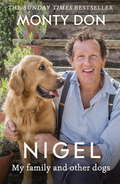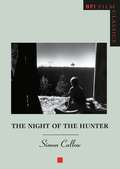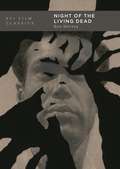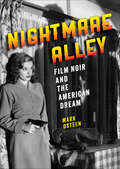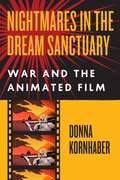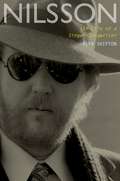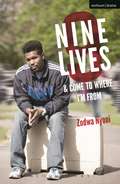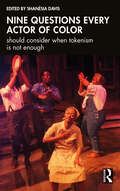- Table View
- List View
Nigel: my family and other dogs
by Monty DonTHE SUNDAY TIMES BESTSELLERNIGEL - One of Britain's favourite dogs! MONTY DON - One of Britain's favourite presenters. When Monty Don's golden retriever Nigel became the surprise star of BBC Gardeners' World inspiring huge interest, fan mail and his own social media accounts, Monty Don wanted to explore what makes us connect with animals quite so deeply. In many respects Nigel is a very ordinary dog; charming, handsome and obedient, as so many are. He is a much loved family pet. He is also a star. By telling Nigel's story, Monty relates his relationships with the other special dogs in his life in a memoir of his dogs past and very much present. Witty, touching and life-affirming, Nigel: My family and other dogs is wonderfully heart-warming. Monty Don is a great writer coming out of the garden and into the hearts and homes of every dog lover in the UK.'I have always had a dog, or dogs. I cannot imagine life without them. I am just as much a fan of Nigel as any besotted viewer. In the book I explore why we love dogs and what they mean to us emotionally and domestically. I look back on all the dogs in my life - all of which I have loved deeply and which have been an essential part of my life. So, this is the book of Nigel - but also the book of all our dogs in every British family and a celebration of the deep love we feel for them' Monty Don
Night and the City (BFI Film Classics)
by Andrew PulverNight and the City (1950), directed by Jules Dassin and starring Richard Widmark, is the compelling story of a hoodlum on the make in postwar London. Andrew Pulver's study of the film traces the film's production history and places it in the context of British film noir and the urban mythology of its West End setting.
Night and the City (BFI Film Classics)
by Andrew PulverNight and the City (1950), directed by Jules Dassin and starring Richard Widmark, is the compelling story of a hoodlum on the make in postwar London. Andrew Pulver's study of the film traces the film's production history and places it in the context of British film noir and the urban mythology of its West End setting.
Night Mail (BFI Film Classics)
by Scott AnthonyNight Mail (1936) is one of the best-loved and best-known films in the canon of British documentary cinema. Bringing together the creative talents of Harry Watt, Basil Wright, W. H. Auden and Benjamin Britten, the film gave John Grierson's documentary school its first popular success. Its collectivist politics and its peculiarly modest brand of modernism is as redolent of the inter-war age as Agatha Christie, Penguin Books or The Shell Guides. But it was also a corporate promo, part of a publicity campaign initiated by Clement Attlee to stave off Post Office part-privatisation and to improve the morale of postal workers. Scott Anthony's study provides a lively appreciation of this vivid, witty and often just plain eccentric masterpiece. In doing so he uncovers the remarkable stories of civic-minded idealism, creative intrigue and political trickery that underpin this classic documentary.
Night Mail (BFI Film Classics)
by Scott AnthonyNight Mail (1936) is one of the best-loved and best-known films in the canon of British documentary cinema. Bringing together the creative talents of Harry Watt, Basil Wright, W. H. Auden and Benjamin Britten, the film gave John Grierson's documentary school its first popular success. Its collectivist politics and its peculiarly modest brand of modernism is as redolent of the inter-war age as Agatha Christie, Penguin Books or The Shell Guides. But it was also a corporate promo, part of a publicity campaign initiated by Clement Attlee to stave off Post Office part-privatisation and to improve the morale of postal workers. Scott Anthony's study provides a lively appreciation of this vivid, witty and often just plain eccentric masterpiece. In doing so he uncovers the remarkable stories of civic-minded idealism, creative intrigue and political trickery that underpin this classic documentary.
The Night of the Hunter (BFI Film Classics)
by Simon CallowThis is an examination of 'The Night of the Hunter', Charles Laughton's only outing as a film director. It looks at the symbolism of the piece, at Willa, her throat cut sitting in the Model-T Ford, and the Preacher, a silhouetted threat on the horizon.
The Night of the Hunter (BFI Film Classics #Vol. 59)
by Simon CallowThis is an examination of 'The Night of the Hunter', Charles Laughton's only outing as a film director. It looks at the symbolism of the piece, at Willa, her throat cut sitting in the Model-T Ford, and the Preacher, a silhouetted threat on the horizon.
Night of the Living Dead (BFI Film Classics)
by Ben HerveyGeorge A. Romero's Night of the Living Dead is a cult classic, a tremendously effective and influential horror film that has resonated with its audiences, and with independent film-makers, ever since its release in 1968. The movie redefined horror cinema, ripping away its Gothic cobwebs to confront harsh contemporary realities, and launched the modern zombie genre that continues with films like 28 Days Later ... and Shaun of the Dead. Shot by Romero and a determined team of Pittsburghers on a shoestring budget, the film was as raw and bleak as uncensored news footage: an uncompromising picture of a nation devouring itself. Young audiences responded: from the counterculture hangouts of Greenwich Village, Night became an international midnight movie cult. Fans returned to see it over and over again. Ben Hervey's illuminating study of the movie and its enduring appeal traces Night's influences, from Powell and Pressburger to fifties horror comics, and provides the first history of its reception. Hervey argues that the film broke cultural barriers, feted at New York's Museum of Modern Art while it was still packing out 42nd Street grindhouses. Scene-by-scene analysis meshes with detailed historical contexts, showing why Night spoke to its audiences about Vietnam, civil rights and the ever-bloodier seizures of a society in the grip of huge change. Hervey argues that Night was a new kind of horror film: the expression of a generation who didn't want their world to return to normal.
Night of the Living Dead (BFI Film Classics)
by Ben HerveyGeorge A. Romero's Night of the Living Dead is a cult classic that has resonated with audiences and independent filmmakers ever since its release in 1968. It redefined horror cinema and launched the modern zombie genre that continues with films and series like 28 Days Later, Shaun of the Dead and The Walking Dead.Ben Hervey's illuminating study of the movie traces Night's influences, from Powell and Pressburger to fifties horror comics, and provides the first history of its reception. Hervey argues that the film broke cultural barriers, fêted at New York's Museum of Modern Art while it was still packing 42nd Street grindhouses. Scene-by-scene analysis meshes with detailed historical contexts, showing why Night was a new kind of horror film: the expression of a generation who didn't want their world to return to normal.
Night of the Living Dead (BFI Film Classics)
by Ben HerveyGeorge A. Romero's Night of the Living Dead is a cult classic that has resonated with audiences and independent filmmakers ever since its release in 1968. It redefined horror cinema and launched the modern zombie genre that continues with films and series like 28 Days Later, Shaun of the Dead and The Walking Dead.Ben Hervey's illuminating study of the movie traces Night's influences, from Powell and Pressburger to fifties horror comics, and provides the first history of its reception. Hervey argues that the film broke cultural barriers, fêted at New York's Museum of Modern Art while it was still packing 42nd Street grindhouses. Scene-by-scene analysis meshes with detailed historical contexts, showing why Night was a new kind of horror film: the expression of a generation who didn't want their world to return to normal.
A Night to Remember: The Definitive "Titanic" Film (British Film Guides)
by Jeffrey RichardsThe Titanic was believed to be unsinkable. On the night of 14-15 April 1912, during her maiden voyage, she struck an iceberg and sank, losing 1,490 of her 2,201 passengers. Of the five epic films of this tragic event, the classic docu-drama, A Night to Remember (1958), scripted by Eric Ambler and directed by Roy Baker, is the definitive version. Jeffrey Richards' fascinating guide to this remarkable film includes the story of its production and its place in the huge generation of Titanic mythology, in-depth examination of the film, emphasising its images of race, class, gender and religion as well as detailed comparison with the other Titanic films, particularly James Cameron's 1997 Titanic blockbuster.
Nightmare Alley: Film Noir and the American Dream
by Mark OsteenDesperate young lovers on the lam (They Live by Night), a cynical con man making a fortune as a mentalist (Nightmare Alley), a penniless pregnant girl mistaken for a wealthy heiress (No Man of Her Own), a wounded veteran who has forgotten his own name (Somewhere in the Night)—this gallery of film noir characters challenges the stereotypes of the wise-cracking detective and the alluring femme fatale. Despite their differences, they all have something in common: a belief in self-reinvention. Nightmare Alley is a thorough examination of how film noir disputes this notion at the heart of the American Dream.Central to many of these films, Mark Osteen argues, is the story of an individual trying, by dint of hard work or, more often, illicit enterprises, to overcome his or her origins and achieve material success. In the wake of World War II, the noir genre tested the dream of upward mobility and the ideas of individualism, liberty, equality, and free enterprise that accompany it.Employing an impressive array of theoretical perspectives (including psychoanalysis, art history, feminism, and music theory) and combining close reading with original primary source research, Nightmare Alley proves both the diversity of classic noir and its potency. This provocative and wide-ranging study revises and refreshes our understanding of noir's characters, themes, and cultural significance.
Nightmares in the Dream Sanctuary: War and the Animated Film
by Donna KornhaberIn 2008, Waltz with Bashir shocked the world by presenting a bracing story of war in what seemed like the most unlikely of formats—an animated film. Yet as Donna Kornhaber shows in this pioneering new book, the relationship between animation and war is actually as old as film itself. The world’s very first animated movie was made to solicit donations for the Second Boer War, and even Walt Disney sent his earliest creations off to fight on gruesome animated battlefields drawn from his First World War experience. As Kornhaber strikingly demonstrates, the tradition of wartime animation, long ignored by scholars and film buffs alike, is one of the world’s richest archives of wartime memory and witness. Generation after generation, artists have turned to this most fantastical of mediums to capture real-life horrors they can express in no other way. From Chinese animators depicting the Japanese invasion of Shanghai to Bosnian animators portraying the siege of Sarajevo, from African animators documenting ethnic cleansing to South American animators reflecting on torture and civil war, from Vietnam-era protest films to the films of the French Resistance, from firsthand memories of Hiroshima to the haunting work of Holocaust survivors, the animated medium has for more than a century served as a visual repository for some of the darkest chapters in human history. It is a tradition that continues even to this day, in animated shorts made by Russian dissidents decrying the fighting in Ukraine, American soldiers returning from Iraq, or Middle Eastern artists commenting on the Israeli-Palestinian conflict, the Arab Spring, or the ongoing crisis in Yemen. Nightmares in the Dream Sanctuary: War and the Animated Film vividly tells the story of these works and many others, covering the full history of animated film and spanning the entire globe. A rich, serious, and deeply felt work of groundbreaking media history, it is also an emotional testament to the power of art to capture the endurance of the human spirit in the face of atrocity.
Nightmares in the Dream Sanctuary: War and the Animated Film
by Donna KornhaberIn 2008, Waltz with Bashir shocked the world by presenting a bracing story of war in what seemed like the most unlikely of formats—an animated film. Yet as Donna Kornhaber shows in this pioneering new book, the relationship between animation and war is actually as old as film itself. The world’s very first animated movie was made to solicit donations for the Second Boer War, and even Walt Disney sent his earliest creations off to fight on gruesome animated battlefields drawn from his First World War experience. As Kornhaber strikingly demonstrates, the tradition of wartime animation, long ignored by scholars and film buffs alike, is one of the world’s richest archives of wartime memory and witness. Generation after generation, artists have turned to this most fantastical of mediums to capture real-life horrors they can express in no other way. From Chinese animators depicting the Japanese invasion of Shanghai to Bosnian animators portraying the siege of Sarajevo, from African animators documenting ethnic cleansing to South American animators reflecting on torture and civil war, from Vietnam-era protest films to the films of the French Resistance, from firsthand memories of Hiroshima to the haunting work of Holocaust survivors, the animated medium has for more than a century served as a visual repository for some of the darkest chapters in human history. It is a tradition that continues even to this day, in animated shorts made by Russian dissidents decrying the fighting in Ukraine, American soldiers returning from Iraq, or Middle Eastern artists commenting on the Israeli-Palestinian conflict, the Arab Spring, or the ongoing crisis in Yemen. Nightmares in the Dream Sanctuary: War and the Animated Film vividly tells the story of these works and many others, covering the full history of animated film and spanning the entire globe. A rich, serious, and deeply felt work of groundbreaking media history, it is also an emotional testament to the power of art to capture the endurance of the human spirit in the face of atrocity.
Nightmares in the Dream Sanctuary: War and the Animated Film
by Donna KornhaberIn 2008, Waltz with Bashir shocked the world by presenting a bracing story of war in what seemed like the most unlikely of formats—an animated film. Yet as Donna Kornhaber shows in this pioneering new book, the relationship between animation and war is actually as old as film itself. The world’s very first animated movie was made to solicit donations for the Second Boer War, and even Walt Disney sent his earliest creations off to fight on gruesome animated battlefields drawn from his First World War experience. As Kornhaber strikingly demonstrates, the tradition of wartime animation, long ignored by scholars and film buffs alike, is one of the world’s richest archives of wartime memory and witness. Generation after generation, artists have turned to this most fantastical of mediums to capture real-life horrors they can express in no other way. From Chinese animators depicting the Japanese invasion of Shanghai to Bosnian animators portraying the siege of Sarajevo, from African animators documenting ethnic cleansing to South American animators reflecting on torture and civil war, from Vietnam-era protest films to the films of the French Resistance, from firsthand memories of Hiroshima to the haunting work of Holocaust survivors, the animated medium has for more than a century served as a visual repository for some of the darkest chapters in human history. It is a tradition that continues even to this day, in animated shorts made by Russian dissidents decrying the fighting in Ukraine, American soldiers returning from Iraq, or Middle Eastern artists commenting on the Israeli-Palestinian conflict, the Arab Spring, or the ongoing crisis in Yemen. Nightmares in the Dream Sanctuary: War and the Animated Film vividly tells the story of these works and many others, covering the full history of animated film and spanning the entire globe. A rich, serious, and deeply felt work of groundbreaking media history, it is also an emotional testament to the power of art to capture the endurance of the human spirit in the face of atrocity.
Nightmares in the Dream Sanctuary: War and the Animated Film
by Donna KornhaberIn 2008, Waltz with Bashir shocked the world by presenting a bracing story of war in what seemed like the most unlikely of formats—an animated film. Yet as Donna Kornhaber shows in this pioneering new book, the relationship between animation and war is actually as old as film itself. The world’s very first animated movie was made to solicit donations for the Second Boer War, and even Walt Disney sent his earliest creations off to fight on gruesome animated battlefields drawn from his First World War experience. As Kornhaber strikingly demonstrates, the tradition of wartime animation, long ignored by scholars and film buffs alike, is one of the world’s richest archives of wartime memory and witness. Generation after generation, artists have turned to this most fantastical of mediums to capture real-life horrors they can express in no other way. From Chinese animators depicting the Japanese invasion of Shanghai to Bosnian animators portraying the siege of Sarajevo, from African animators documenting ethnic cleansing to South American animators reflecting on torture and civil war, from Vietnam-era protest films to the films of the French Resistance, from firsthand memories of Hiroshima to the haunting work of Holocaust survivors, the animated medium has for more than a century served as a visual repository for some of the darkest chapters in human history. It is a tradition that continues even to this day, in animated shorts made by Russian dissidents decrying the fighting in Ukraine, American soldiers returning from Iraq, or Middle Eastern artists commenting on the Israeli-Palestinian conflict, the Arab Spring, or the ongoing crisis in Yemen. Nightmares in the Dream Sanctuary: War and the Animated Film vividly tells the story of these works and many others, covering the full history of animated film and spanning the entire globe. A rich, serious, and deeply felt work of groundbreaking media history, it is also an emotional testament to the power of art to capture the endurance of the human spirit in the face of atrocity.
Nikita: French Film Guide (Ciné-File French Film Guides)
by Susan HaywardNikita' (1990) is the story of a nineteen-year old junkie, Nikita (Anne Parillaud) who is given a second chance in life through being trained to be - and becoming - a skilled assassin for the State. 'Nikita' is a cult classic, directed by Luc Besson (with Thierry Arbogast as director of photography) in his hallmark powerful style. The film was an international hit, which spawned a TV series and a Hollywood remake. Susan Hayward develops here a fresh and provocative way of understanding 'Nikita''s plot structure as a neo-baroque symphony. She goes in depth into key sequences of the film, examines its reception as a popular film by audiences and critics, and looks at 'The Assassin', the Hollywood remake of 'Nikita'.This is a wonderfully exciting book on an underrated film. It also shows that the woman placed at the centre of a film noir can', as Susan Hayward points out, 'for once win - or at least "get away with it".''Ginette Vincendeau has assembled an elite corps of film scholars to address a marvellous array of modern and classic French films with the close-up scrutiny they deserve.'- Dudley Andrew
Nikita Mikhalkov: The Filmmaker's Companion 1 (KINO - Russian Filmmakers' Companions)
by Birgit BeumersAdored by Russian audiences for his commercially-oriented films, and loathed by the Russian intelligentsia for the same, Nikita Mikhalkov is one of the most successful, ambitious and controversial film directors in the history of Soviet and Russian cinema. Revealing and discussing the key themes explored in his work, Birgit Beumers follows his career from his 1974 debut At Home Among Strangers, a Stranger at Home; through to the French co-productions: the award-winning Urga and the internationally renowned Oscar-winning Burnt by the Sun, 1994.
Nilsson: The Life of a Singer-Songwriter
by Alyn ShiptonPaul McCartney and John Lennon described him as the Beatles' "favorite group," he won Grammy awards, wrote and recorded hit songs, and yet no figure in popular music is as much of a paradox, or as underrated, as Harry Nilsson. In this first ever full-length biography, Alyn Shipton traces Nilsson's life from his Brooklyn childhood to his Los Angeles adolescence and his gradual emergence as a uniquely talented singer-songwriter. With interviews from friends, family, and associates, and material drawn from an unfinished autobiography, Shipton probes beneath the enigma to discover the real Harry Nilsson. A major celebrity at a time when huge concerts and festivals were becoming the norm, Nilsson shunned live performance. His venue was the studio, his stage the dubbing booth, his greatest triumphs masterful examples of studio craft. He was a gifted composer of songs for a wide variety of performers, including the Ronettes, the Yardbirds, and the Monkees, yet Nilsson's own biggest hits were almost all written by other songwriters. He won two Grammy awards, in 1969 for "Everybody's Talkin'" (the theme song for Midnight Cowboy), and in 1972 for "Without You," had two top ten singles, numerous album successes, and wrote a number of songs--"Coconut" and "Jump into the Fire," to name just two--that still sound remarkably fresh and original today. He was once described by his producer Richard Perry as "the finest white male singer on the planet," but near the end of his life, Nilsson's career was marked by voice-damaging substance abuse and the infamous deaths of both Keith Moon and Mama Cass in his London flat. Drawing on exclusive access to Nilsson's papers, Alyn Shipton's biography offers readers an intimate portrait of a man who has seemed both famous and unknowable--until now.
Nilsson: The Life of a Singer-Songwriter
by Alyn ShiptonPaul McCartney and John Lennon described him as the Beatles' "favorite group," he won Grammy awards, wrote and recorded hit songs, and yet no figure in popular music is as much of a paradox, or as underrated, as Harry Nilsson. In this first ever full-length biography, Alyn Shipton traces Nilsson's life from his Brooklyn childhood to his Los Angeles adolescence and his gradual emergence as a uniquely talented singer-songwriter. With interviews from friends, family, and associates, and material drawn from an unfinished autobiography, Shipton probes beneath the enigma to discover the real Harry Nilsson. A major celebrity at a time when huge concerts and festivals were becoming the norm, Nilsson shunned live performance. His venue was the studio, his stage the dubbing booth, his greatest triumphs masterful examples of studio craft. He was a gifted composer of songs for a wide variety of performers, including the Ronettes, the Yardbirds, and the Monkees, yet Nilsson's own biggest hits were almost all written by other songwriters. He won two Grammy awards, in 1969 for "Everybody's Talkin'" (the theme song for Midnight Cowboy), and in 1972 for "Without You," had two top ten singles, numerous album successes, and wrote a number of songs--"Coconut" and "Jump into the Fire," to name just two--that still sound remarkably fresh and original today. He was once described by his producer Richard Perry as "the finest white male singer on the planet," but near the end of his life, Nilsson's career was marked by voice-damaging substance abuse and the infamous deaths of both Keith Moon and Mama Cass in his London flat. Drawing on exclusive access to Nilsson's papers, Alyn Shipton's biography offers readers an intimate portrait of a man who has seemed both famous and unknowable--until now.
Nine Lives and Come To Where I'm From (Modern Plays)
by Zodwa NyoniNINE LIVESSee over here it's not like over there. Here there are neon lights. Here there are queens. Here there are rainbow flags draw high.One man and a suitcase filled with the past, uncertainty, high heels, brokenness, African dancing shells and hope.Ishmael has been outed, along with his lover, David. He has sought sanctuary in the UK, but is this evidence enough? As Ishmael waits to hear his fate, he encounters new friends – and enemies, all the while looking for a place to call home again. Zodwa Nyoni threads together humour and humanity to tell the real personal story behind asylum headlines.Nine Lives was developed as part of the West Yorkshire Playhouse's A Play, A Pie and A Pint programme in 2014 and received a UK national tour in 2015.COME TO WHERE I'M FROMTongue-tied child got lost in migration. Tongue-tied child got lost in separation. Tongue-tied child got lost in assimilation.Theatre company Paines Plough's Come To Where I'm From programme offers a theatrical tapestry of the UK, woven by writers asking if home really is where the heart is. Since 2010, 88 playwrights from across the UK have returned to their home towns to write plays about the places that shaped them. This publication features Zodwa Nyoni's 2013 monologue for the series - a meditation on place, belonging and the author's Zimbabwean roots.
Nine Lives and Come To Where I'm From (Modern Plays)
by Zodwa NyoniNINE LIVESSee over here it's not like over there. Here there are neon lights. Here there are queens. Here there are rainbow flags draw high.One man and a suitcase filled with the past, uncertainty, high heels, brokenness, African dancing shells and hope.Ishmael has been outed, along with his lover, David. He has sought sanctuary in the UK, but is this evidence enough? As Ishmael waits to hear his fate, he encounters new friends – and enemies, all the while looking for a place to call home again. Zodwa Nyoni threads together humour and humanity to tell the real personal story behind asylum headlines.Nine Lives was developed as part of the West Yorkshire Playhouse's A Play, A Pie and A Pint programme in 2014 and received a UK national tour in 2015.COME TO WHERE I'M FROMTongue-tied child got lost in migration. Tongue-tied child got lost in separation. Tongue-tied child got lost in assimilation.Theatre company Paines Plough's Come To Where I'm From programme offers a theatrical tapestry of the UK, woven by writers asking if home really is where the heart is. Since 2010, 88 playwrights from across the UK have returned to their home towns to write plays about the places that shaped them. This publication features Zodwa Nyoni's 2013 monologue for the series - a meditation on place, belonging and the author's Zimbabwean roots.
The Nine Old Men: Lessons, Techniques, and Inspiration from Disney's Great Animators
by Andreas DejaLearn from the men who changed animation forever Walt Disney’s team of core animators, who he affectionately called his "Nine Old Men," were known for creating Disney’s most famous works, as well as refining the 12 basic principles of animation. Follow master animator and Disney legend Andreas Deja as he takes you through the minds and works of these notable animators. An apprentice to the Nine Old Men himself, Deja gives special attention to each animator and provides a thoughtful analysis on their techniques that include figure drawing, acting, story structure, and execution. The in-depth analysis of each animator’s work will allow you to refine your approach to character animation. Rare sequential drawings from the Disney archives also give you unprecedented access and insight into the most creative minds that changed the course of animation. Instruction and analysis on the works of each of the Nine Old Men broaden your creative choices and approaches to character animation Original drawings, some never-before-seen by the public are explored in depth, giving you behind-the-scenes access into Disney animation history Gain first-hand insight into the foundation of timeless characters and scenes from some of Disney’s most memorable feature and short films
The Nine Old Men: Lessons, Techniques, and Inspiration from Disney's Great Animators
by Andreas DejaLearn from the men who changed animation forever Walt Disney’s team of core animators, who he affectionately called his "Nine Old Men," were known for creating Disney’s most famous works, as well as refining the 12 basic principles of animation. Follow master animator and Disney legend Andreas Deja as he takes you through the minds and works of these notable animators. An apprentice to the Nine Old Men himself, Deja gives special attention to each animator and provides a thoughtful analysis on their techniques that include figure drawing, acting, story structure, and execution. The in-depth analysis of each animator’s work will allow you to refine your approach to character animation. Rare sequential drawings from the Disney archives also give you unprecedented access and insight into the most creative minds that changed the course of animation. Instruction and analysis on the works of each of the Nine Old Men broaden your creative choices and approaches to character animation Original drawings, some never-before-seen by the public are explored in depth, giving you behind-the-scenes access into Disney animation history Gain first-hand insight into the foundation of timeless characters and scenes from some of Disney’s most memorable feature and short films
Nine questions every actor of color should consider when tokenism is not enough
by Shanésia DavisThis book confronts and analyzes the systemic racism that confronts actors of color in the USA through interviews with leading performers in the nation’s theatrical epicentre of Chicago.Each chapter deals with a different central question, from how these actors approach roles and the obstacles that they face, to the ways in which the industry can change to better enable actors of color. By bringing together these actors and sharing the ways in which they have functioned within the white theatre world, we can appreciate how theatre needs to embrace their identities so that all voices are heard, understood, and valued. The stories of these actors will reflect the systemic racism of the past and present with the hope of remaking the future.This is an important book for students, teachers, and professionals who engage in theatre work, helping them to understand the lived experiences of actors of color through those actors’ own words.
